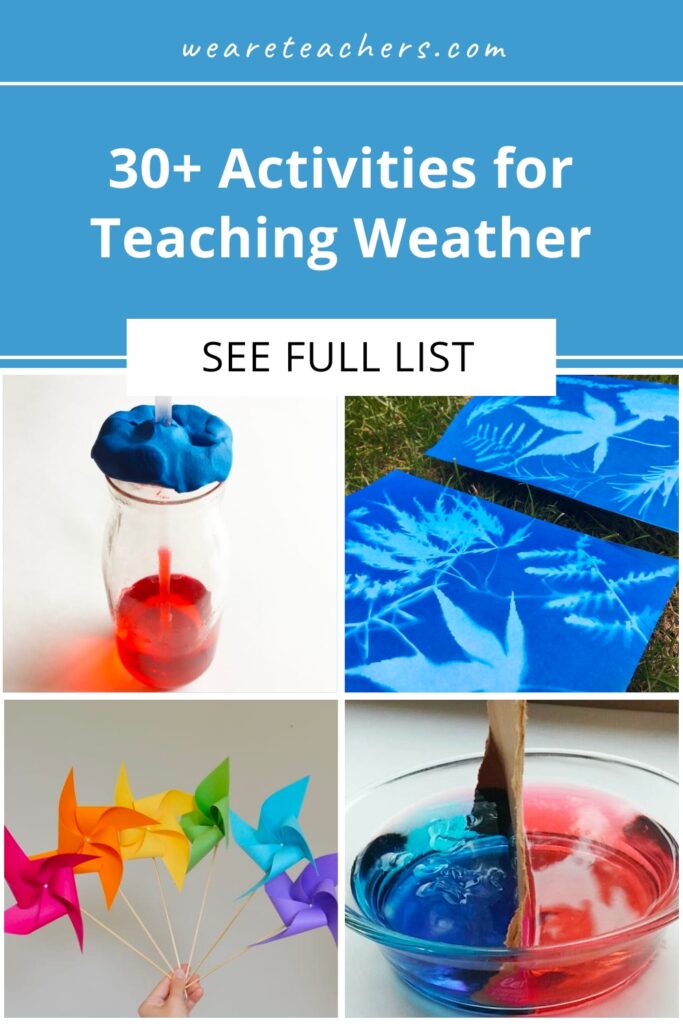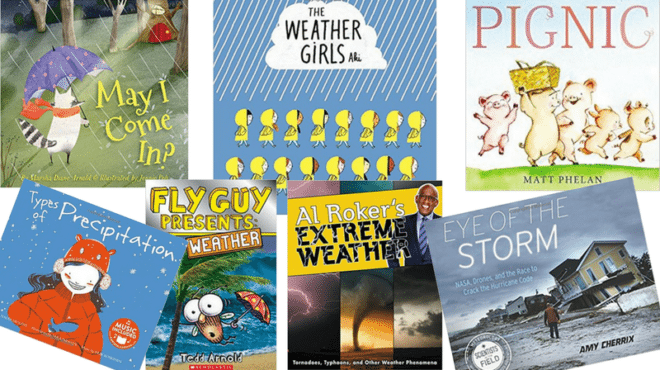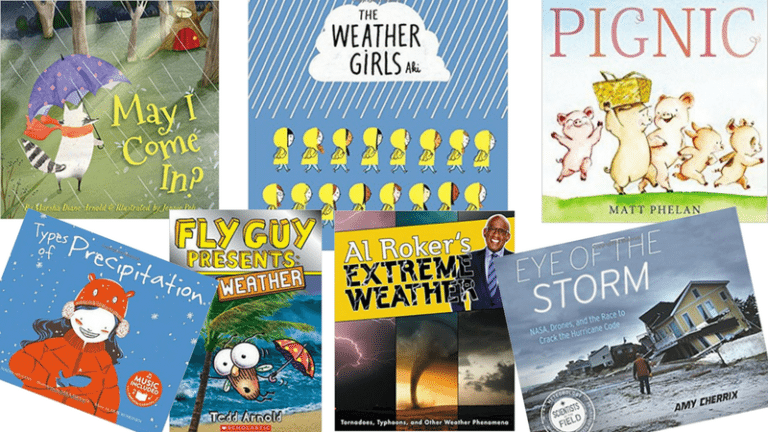Spring is the perfect season to study the weather and get your students outdoors for hands-on activities. From reading and writing about the weather to conducting experiments and more, here’s our list of weather activities for the classroom, perfect for preschool through middle school.
1. Read books about weather
Read-alouds are some of the most simple classroom activities that teach kids about weather. Get your students amped up about studying the weather with a flood of books. Read a few aloud, feature them in your classroom library, and let students study them with partners.
Learn more: 22 Awesome Weather Books for Kids
2. Start a weather journal
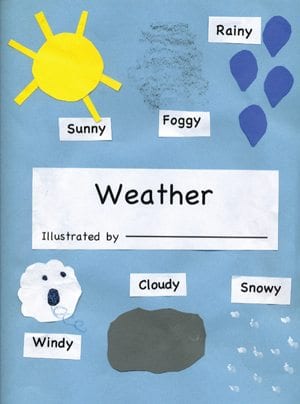
What you need: Construction paper, scissors, glue, preprinted labels, crayons, recording pages
What to do: Have students fold a large piece of construction paper in half to make a book cover. Staple a stack of recording pages (see samples) into the middle. Use scissors to cut out clouds, the sun, and raindrops, and glue them onto the cover. Draw in snow and fog. Glue labels as illustrated onto the cover. Then allow students a few minutes each day to journal the weather outside.
Learn more: The Curriculum Corner
3. Learn weather vocabulary words
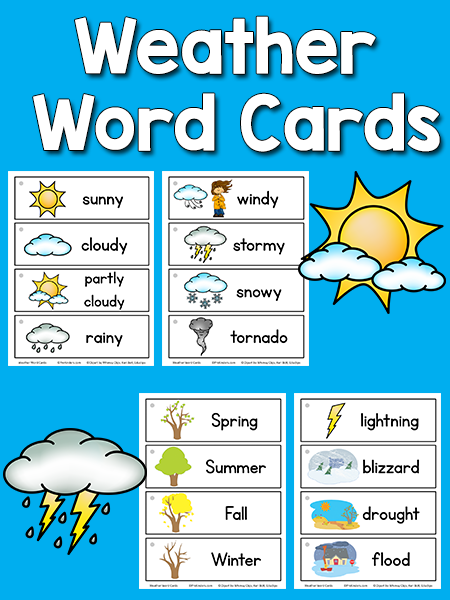
Give your students the words to describe all kinds of weather with these free printable cards. With words like sunny, cloudy, and stormy, as well as blizzard, flood, hurricane, the four seasons, and others, they can be used for many activities, such as helping students fill in their weather journals.
Learn more: PreKinders
4. Make it rain
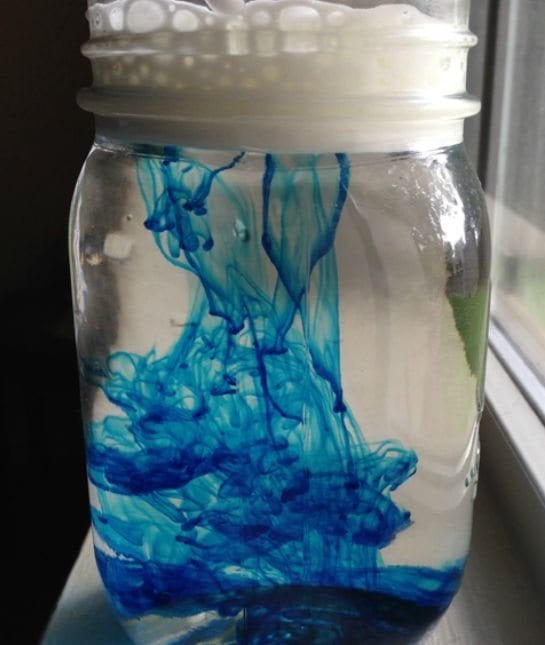
What you need: Clear plastic cup or glass jar, shaving cream, food coloring
What to do: Fill the cup with water. Squirt shaving cream on top for the clouds. Explain that when clouds get really heavy with water, it rains! Then put blue food coloring on top of the cloud and watch it “rain.”
Learn more: The Happy Housewife
5. Create your own miniature water cycle
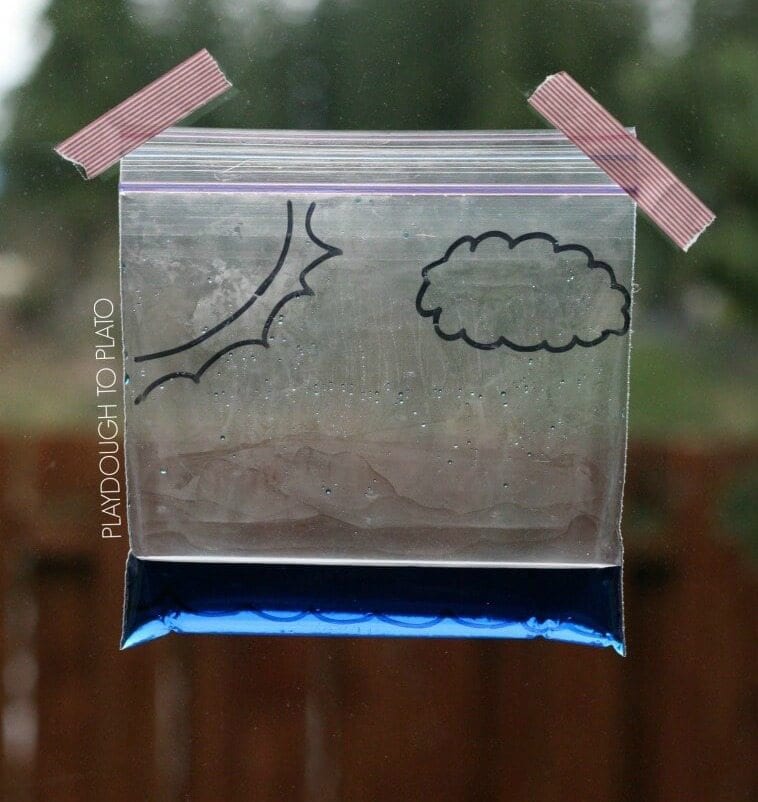
What you need: Ziplock bag, water, blue food coloring, Sharpie pen, tape
What to do: Weather activities like this one take a little bit of patience, but they’re worth the wait. Pour one-quarter cup of water and a few drops of blue food coloring into a ziplock bag. Seal tightly and tape the bag to a (preferably south-facing) wall. As the water warms in the sunlight, it will evaporate into vapor. As the vapor cools, it will begin changing into liquid (condensation) just like a cloud. When the water condenses enough, the air will not be able to hold it and the water will fall down in the form of precipitation.
Learn more: Playdough to Plato
6. Use ice and heat to make rain
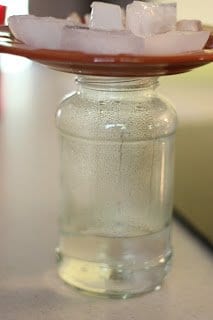
What you need: Glass jar, plate, water, ice cubes
What to do: Heat water until it is steaming, then pour it into the jar until it is about one-third full. Place a plate full of ice cubes on top of the jar. Watch as condensation builds and water begins to stream down the sides of the jar.
Learn more: I Can Teach My Child
7. Watch the fog roll in
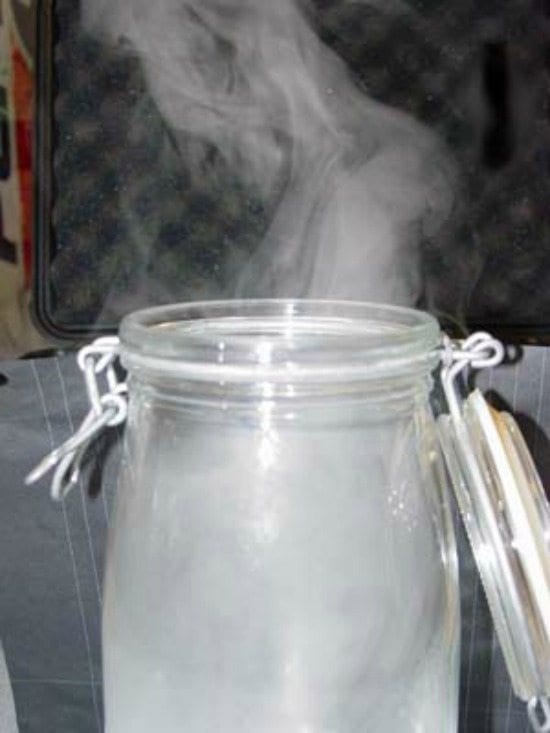
What you need: Glass jar, small strainer, water, ice cubes
What to do: Fill the jar completely with hot water for about a minute. Pour out almost all the water, leaving about 1 inch in the jar. Place the strainer over the top of the jar. Drop three or four ice cubes into the strainer. As the cold air from the ice cubes collides with the warm, moist air in the bottle, the water will condense and fog will form. This is one of those weather activities that will inspire plenty of oohs and aahs!
Learn more: Weather Wiz Kids/Fog Experiments
8. Make a cloud poster

What you need: 1 large piece of construction paper or small poster board, cotton balls, glue, marker
What to do: Using the information guide included at the link, create different types of clouds by manipulating the cotton balls. Then glue them to the poster and label them.
Learn more: Science Spot
9. Crack a few weather jokes
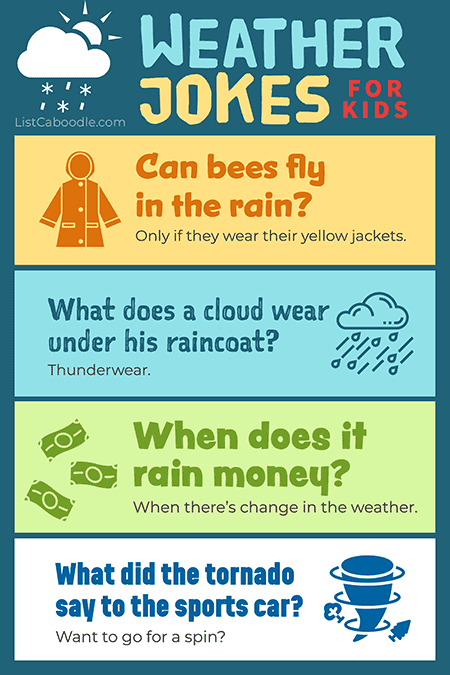
Want to incorporate a little humor into your weather activities? Try some weather-themed jokes! Why is the sun so smart? Because it has more than 5,000 degrees! Bring a little weather humor into your classroom with this collection of jokes and riddles.
Learn more: Listcaboodle
10. Reflect a rainbow

What you need: Glass of water, sheet of white paper, sunlight
What to do: Fill the glass all the way to the top with water. Put the glass of water on a table so that it is half on the table and half off the table (make sure that the glass doesn’t fall!). Then, make sure that the sun can shine through the glass of water. Next, place the white sheet of paper on the floor. Adjust the piece of paper and the glass of water until a rainbow forms on the paper.
How does this happen? Explain to students that light is made up of many colors: red, orange, yellow, green, blue, indigo, and violet. When light passes through the water, it is broken up into all of the colors seen in a rainbow!
Learn more: Rookie Parenting
11. Predict rain using pine cones
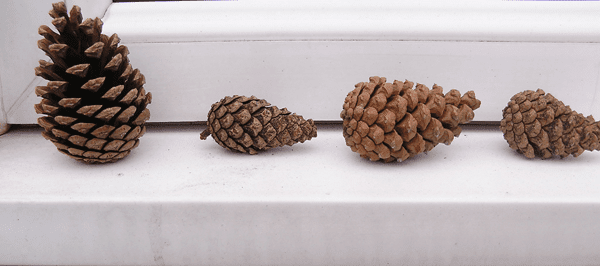
What you need: Pine cones and a journal
What to do: Make a pine-cone weather station! Observe the pine cones and the weather daily. Note that when the weather is dry, the pine cones stay open. When it’s about to rain, the pine cones close! This is a great way to talk about weather prediction with students. Pine cones actually open and close based on the humidity to help seed dispersal.
Learn more: Science Sparks
12. Create your own lightning
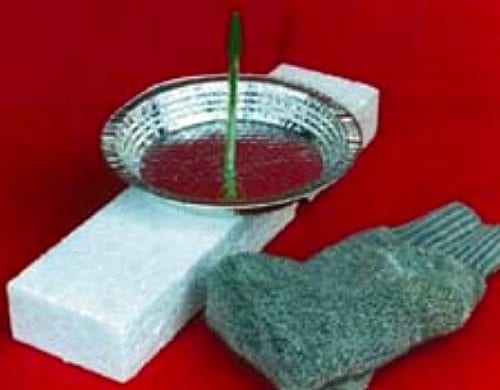
What you need: Aluminum pie tin, wool sock, Styrofoam block, pencil with eraser, thumbtack
What to do: Push the thumbtack through the center of the pie tin from the bottom. Push the eraser end of the pencil onto the thumbtack. Place the tin to the side. Put the Styrofoam block on a table. Quickly rub the block with the wool sock for a couple of minutes. Pick up the aluminum pie pan, using the pencil as a handle, and place it on top of the Styrofoam block. Touch the aluminum pie pan with your finger—you should feel a shock! If you don’t feel anything, try rubbing the Styrofoam block again. Once you feel the shock, try turning the lights out before you touch the pan again. You should see a spark, like lightning!
What is happening? Static electricity. Lightning happens when the negative charges (electrons) in the bottom of the cloud (or in this experiment, your finger) are attracted to the positive charges (protons) in the ground (or in this experiment, the aluminum pie pan). The resulting spark is like a mini lightning bolt.
Learn more: UCAR
13. Learn 10 interesting things about air

Even though air is all around us, we can’t see it. So what is air, exactly? Learn 10 fascinating facts that explain the makeup of air and why it is so important for every living thing.
Learn more: Climate Kids
14. Conjure up lightning in your mouth
What you need: A mirror, a dark room, wintergreen Life Savers
What to do: Turn off the lights and have students wait until their eyes have adjusted to the dark. Bite down on a wintergreen candy while looking in the mirror. Chew with your mouth open and you’ll see that the candy sparks and glitters. What’s happening? You are actually making light with friction: triboluminescence. As you crush the candy, the stress creates electric fields, like electricity in a lightning storm. When the molecules recombine with their electrons, they emit light. Why wintergreen candy? It converts ultraviolet light into visible blue light, which makes the “lightning” brighter to see. If students aren’t seeing it in their own mouths, have them watch the video above.
Learn more: Exploratorium
15. Track a thunderstorm

What you need: Thunder, stopwatch, journal
What to do: Wait for a lightning flash and then start the stopwatch immediately. Stop when you hear the sound of thunder. Have students write down their numbers. For every five seconds, the storm is one mile away. Divide their number by five to see how many miles away the lightning is! The light traveled faster than sound, which is why it took longer to hear the thunder.
Learn more: Weather Wiz Kids/Track a Thunderstorm
16. Make a thunderstorm front
What you need: Clear plastic container (size of a shoebox), red food coloring, ice cubes made with water and blue food coloring
What to do: Fill the plastic container two-thirds full with lukewarm water. Let the water sit for a minute to come to air temperature. Place a blue ice cube into the container. Drop three drops of red food coloring into the water at the opposite end of the container. Watch what happens! Here’s the explanation: The blue cold water (representing a cold air mass) sinks, while the red warm water (representing the warm, unstable air mass) rises. This is called convection and the warm air is forced to rise by the approaching cold front, and the thunderstorm forms.
Learn more: Earth Science Week
17. Learn the difference between weather and climate
Share this interesting video with your students to learn the difference between what we call weather and the climate.
Learn more: Climate Kids
18. Swirl up a tornado
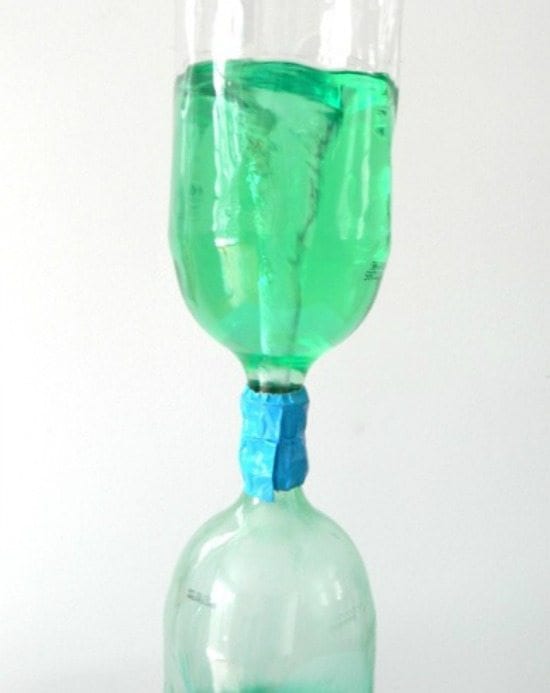
What you need: Two 2-liter clear plastic bottles (empty and clean), water, food coloring, glitter, duct tape
What you do: Students always love classic weather activities like this one. First, fill one of the bottles two-thirds full of water. Add food coloring and a dash of glitter. Use duct tape to fasten the two containers together. Be sure to tape tightly so that no water leaks out when you turn the bottles over. Flip the bottles so that the bottle with the water is on top. Swirl the bottle in a circular motion. This will create a vortex and a tornado will form in the top bottle as the water rushes into the bottom bottle.
Learn more: Discovery Express
19. Make a warm and cold front model
What you need: Two drinking glasses, red and blue food coloring, glass bowl, cardboard
What to do: Fill one glass with chilled water and a couple of drops of blue food coloring. Fill the other with hot water and red food coloring. Cut a piece of cardboard so that it fits snugly into the glass bowl, separating it into two sections. Pour the hot water into one half of the bowl and cold water into the other half. Quickly and carefully pull the cardboard separator out. The water will swirl and settle with the cold water on bottom, the hot water on top, and a purple zone where they mixed in the middle!
Learn more: Preschool Powol Packets
20. Do a Blue Sky experiment
Videos are easy to incorporate into your classroom weather activities. This one answers burning questions about weather. Why does our sky look blue? Why does the sun appear to be yellow even though it is a white star? Find out the answer to these questions and more with this informative video.
Learn more: The Action Lab
21. Grow a snowflake
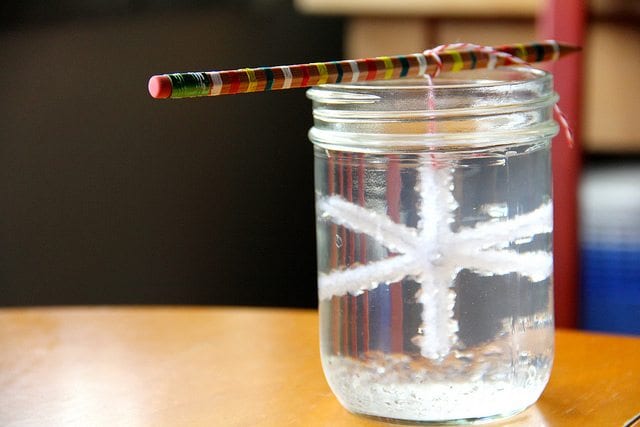
What you need: String, wide-mouthed jar, white pipe cleaners, blue food coloring, boiling water, borax, a pencil
What to do: Cut a white pipe cleaner into thirds. Twist the three sections together in the center so that you now have a shape that looks something like a six-sided star. Make sure the lengths of the star are equal by trimming them to the same length. Tie the flake to the pencil with string. Carefully fill the jar with boiling water (adult job). For each cup of water, add three tablespoons of borax, adding one tablespoon at a time. Stir until the mixture is dissolved, but don’t worry if some of the borax settles at the base of the jar. Add food coloring. Hang the snowflake in the jar. Let sit overnight; remove.
Learn more: Martha Stewart
22. Make magic snowballs

What you need: Frozen baking soda, cold water, vinegar, squirt bottles
What to do: Start by mixing two parts baking soda with one part water to make fluffy, moldable snowballs. Then, pour vinegar into squirt bottles and let kids squirt their snowballs. The reaction between the baking soda and vinegar will cause the snowballs to fizz and bubble. For a snow avalanche, pour vinegar into a tub, then drop a snowball in!
Learn more: Growing a Jeweled Rose
23. Catch the wind
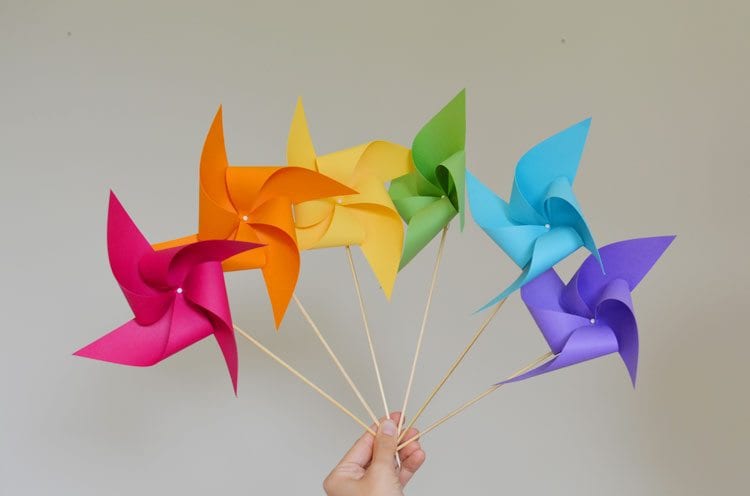
What you need: Paper cut into 6″ x 6″ squares, wood skewers, glue gun, small beads, sewing pins, a thumbtack, needle-nose pliers, scissors
What to do: Make a paper pinwheel! Follow the easy, step-by-step directions in the link below for these colorful and fun weather activities.
Learn more: One Little Project
24. Observe the intensity of the wind
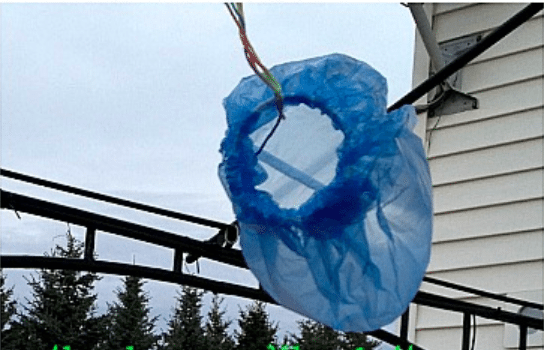
What you need: One large blue recycle bag, one empty plastic container such as a yogurt or sour cream tub, clear packing tape, string or yarn, ribbons or streamers to decorate
What to do: Make a wind sock. Start by cutting the rim off the plastic tub. Wrap the edge of the bag around the rim and secure it with tape. Using a hole punch, make a hole in the bag just below the plastic ring. If you don’t have a hole punch, you can use a pencil. Tie a string through the hole and attach to a post or high railing.
Learn more: The Chaos and the Clutter
25. Determine the direction of the wind
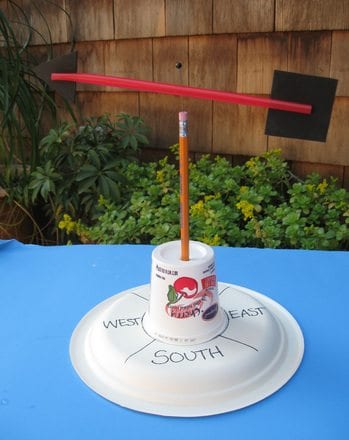
What you need: Paper cup, pencil, straw, pin, paper plate, construction paper scraps
What to do: You’ll be creating a wind vane to detect the direction of the wind! Poke a sharpened pencil through the bottom of a paper cup. Insert a pin through the middle of a drinking straw and into the eraser of the pencil. Make a cut approximately one inch deep on each end of the straw, making sure to go through both sides of the straw. Cut small squares or triangles of construction paper and slip one into each end of the straw. Place your wind vane onto a paper plate or piece of paper with the directions marked.
Learn more: Education.com/Wind Vane
26. Measure wind speed

What you need: Five 3-oz. paper cups, 2 drinking straws, pin, paper punch, scissors, stapler, sharp pencil with eraser
What to do: Take one paper cup (which will be the center of your anemometer) and use a paper punch to punch four equally spaced holes about half an inch below the rim. Push a sharpened pencil through the bottom of the cup so that the eraser rests in the middle of the cup. Push one drinking straw through the hole in one side of the cup and out the other side. Insert the other straw through the opposite holes so that they form a crisscross inside the cup. Push a pin through the intersection of the straws and into the eraser. For each of the other four cups, punch a hole on opposite sides of the cup about half an inch down.
To assemble: Push one cup onto the end of each straw, making sure that all of the cups are facing the same direction. The anemometer will rotate with the wind. It does not need to be pointed in the wind for use.
Learn more: Weather Wiz Kids
27. Measure rain volume
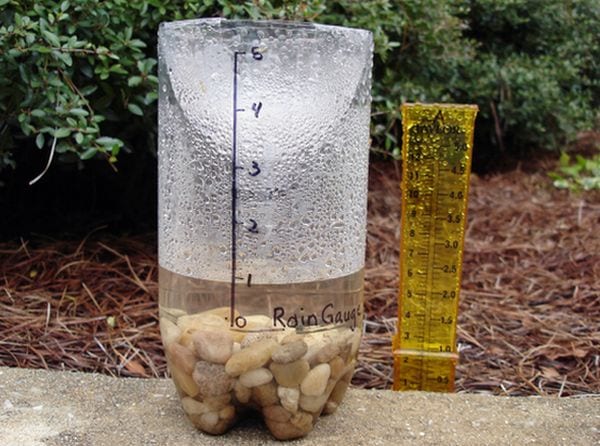
What you need: One 2-liter bottle, Sharpie, stones, water, scissors, ruler, tape
What to do: Create a rain gauge! Start by cutting away the top third of the 2-liter plastic bottle and put it to the side. Pack a few stones at the bottom of the bottle. Pour water in until just above the stone level. Draw a scale on a piece of masking tape with the help of the ruler and paste it on the side of the bottle so you can start counting just above the current water line. Invert the top of the bottle and place it into the bottom half to act as a funnel. Leave the bottle outside to capture rain.
Learn more: News24
28. Create art with the power of the sun
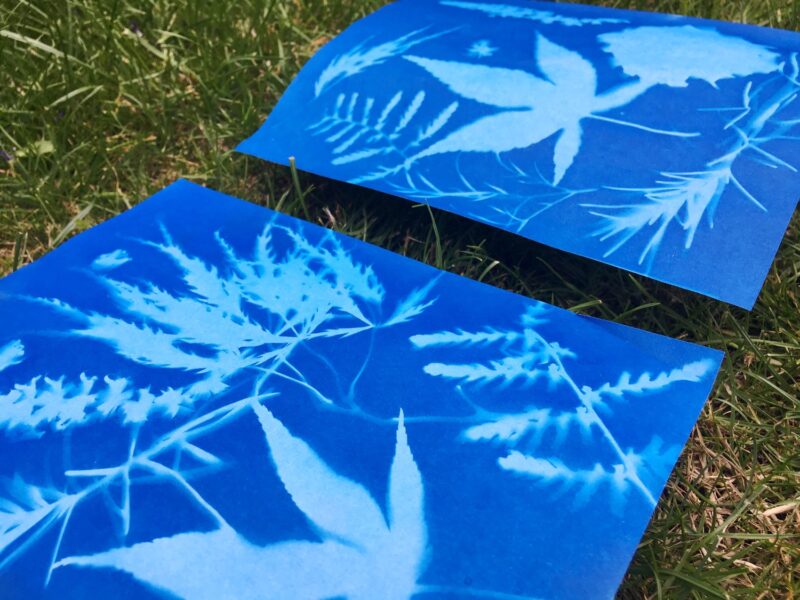
What you need: Photo-sensitive paper, various objects such as leaves, sticks, paper clips, etc.
What to do: Make sun prints! Place the paper, bright-blue side up, in a shallow tub. Place objects you wish to “print” on the paper and leave it in the sun for 2 to 4 minutes. Remove the objects from the paper and the paper from the tub. Soak the paper in water for 1 minute. As the paper dries, the image will sharpen.
Learn more: Mud and Bloom
29. Measure atmospheric pressure
What you need: A dry, empty frozen-juice can or coffee can with lid removed, latex balloon, rubber band, tape, 2 drinking straws, card stock
What to do: This barometer starts by cutting off the stiff band of the balloon. Stretch the balloon over the top of the juice can. Secure a rubber band around the balloon to hold it securely. Tape the end of the drinking straw to the center of the balloon surface, making sure it hangs off to one side. Fold the card stock in half vertically and make hash marks every quarter inch. Set the barometer right next to the measurement card. As the external air pressure changes, it will cause the balloon to bend inward or outward at the center. The tip of the straw will move up or down accordingly. Take pressure readings five or six times a day.
Learn more: All Science Fair Projects
30. Make a DIY thermometer

What you need: Clear plastic bottle, water, rubbing alcohol, clear plastic drinking straw, modeling clay, food coloring
What to do: Fill the bottle about one-quarter full with equal parts water and rubbing alcohol. Add a few drops of food coloring. Put the straw inside the bottle without letting it touch the bottom. Seal the neck of the bottle with the modeling clay to keep the straw in place. Hold your hands on the bottom of the bottle and watch the mixture move up through the straw. Why? It expands when warm!
Learn more: Education.com/Homemade Thermometer
31. Demonstrate a fire tornado
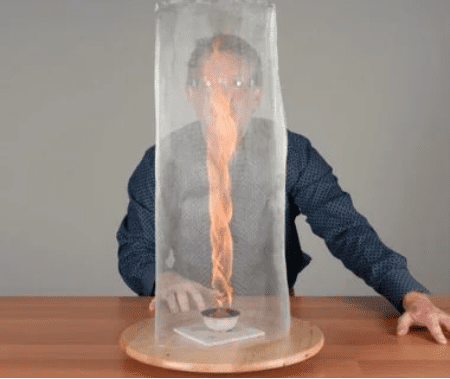
What you need: A lazy Susan, wire screen mesh, small glass dish, sponge, lighter fluid, lighter
What to do: Weather activities like this one are for teacher demonstrations only! Make a cylinder about 2.5 feet tall from the wire screen mesh and set it aside. Place the glass dish in the center of the lazy Susan. Cut the sponge into strips and place in bowl. Soak the sponge with lighter fluid. Light the fire and rotate the lazy Susan. The fire will spin, but a tornado will not be seen. Now, place the wire screen cylinder on the lazy Susan, creating a perimeter around the fire. Give it a spin and watch the tornado dance.
Learn more: Steve Spangler Science
If you liked these weather activities, check out 70 Easy Science Experiments Using Materials You Already Have On Hand.
And for more great hands-on activity ideas, be sure to sign up for our newsletters!
